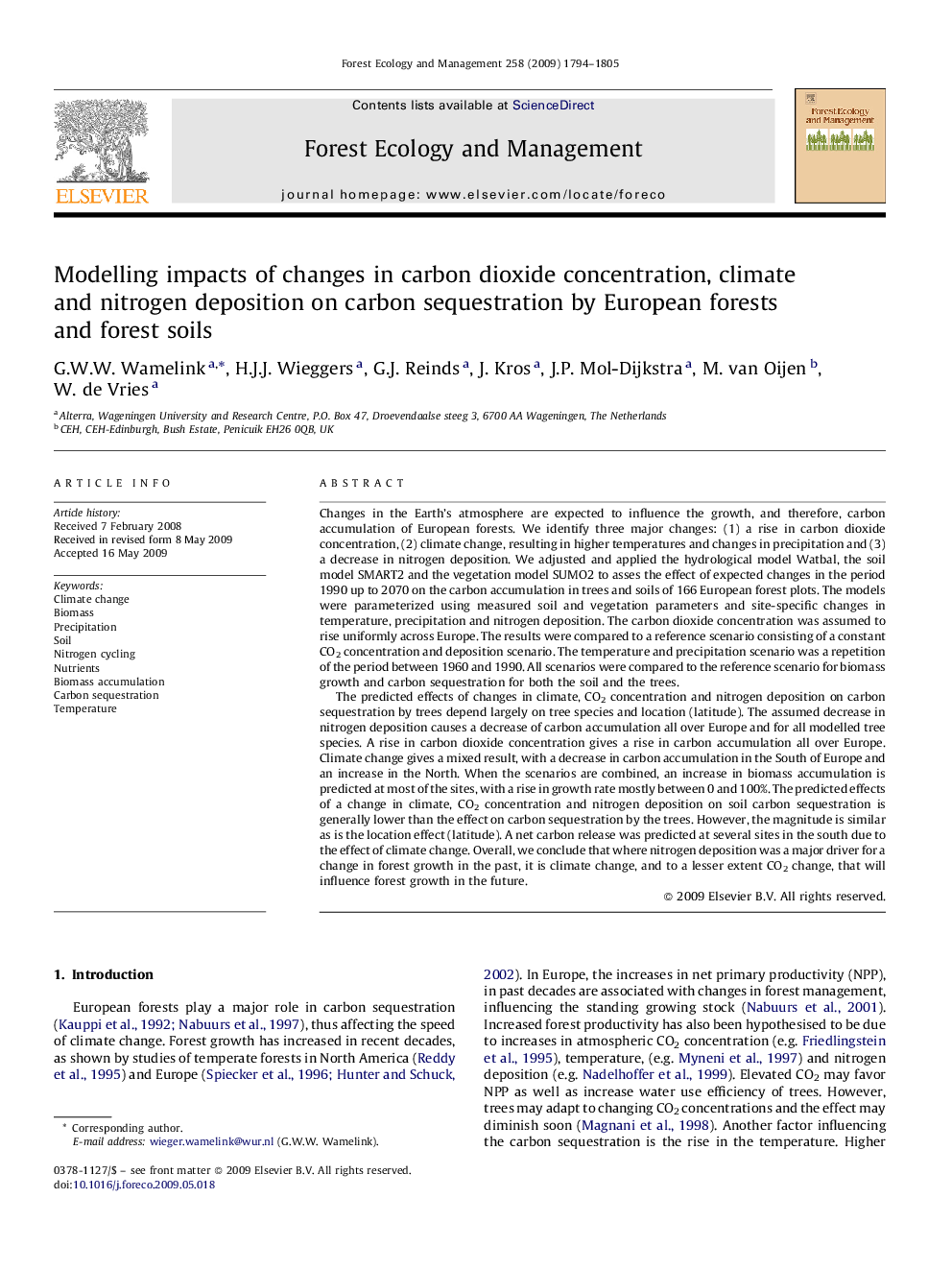| Article ID | Journal | Published Year | Pages | File Type |
|---|---|---|---|---|
| 88463 | Forest Ecology and Management | 2009 | 12 Pages |
Changes in the Earth's atmosphere are expected to influence the growth, and therefore, carbon accumulation of European forests. We identify three major changes: (1) a rise in carbon dioxide concentration, (2) climate change, resulting in higher temperatures and changes in precipitation and (3) a decrease in nitrogen deposition. We adjusted and applied the hydrological model Watbal, the soil model SMART2 and the vegetation model SUMO2 to asses the effect of expected changes in the period 1990 up to 2070 on the carbon accumulation in trees and soils of 166 European forest plots. The models were parameterized using measured soil and vegetation parameters and site-specific changes in temperature, precipitation and nitrogen deposition. The carbon dioxide concentration was assumed to rise uniformly across Europe. The results were compared to a reference scenario consisting of a constant CO2 concentration and deposition scenario. The temperature and precipitation scenario was a repetition of the period between 1960 and 1990. All scenarios were compared to the reference scenario for biomass growth and carbon sequestration for both the soil and the trees.The predicted effects of changes in climate, CO2 concentration and nitrogen deposition on carbon sequestration by trees depend largely on tree species and location (latitude). The assumed decrease in nitrogen deposition causes a decrease of carbon accumulation all over Europe and for all modelled tree species. A rise in carbon dioxide concentration gives a rise in carbon accumulation all over Europe. Climate change gives a mixed result, with a decrease in carbon accumulation in the South of Europe and an increase in the North. When the scenarios are combined, an increase in biomass accumulation is predicted at most of the sites, with a rise in growth rate mostly between 0 and 100%. The predicted effects of a change in climate, CO2 concentration and nitrogen deposition on soil carbon sequestration is generally lower than the effect on carbon sequestration by the trees. However, the magnitude is similar as is the location effect (latitude). A net carbon release was predicted at several sites in the south due to the effect of climate change. Overall, we conclude that where nitrogen deposition was a major driver for a change in forest growth in the past, it is climate change, and to a lesser extent CO2 change, that will influence forest growth in the future.
